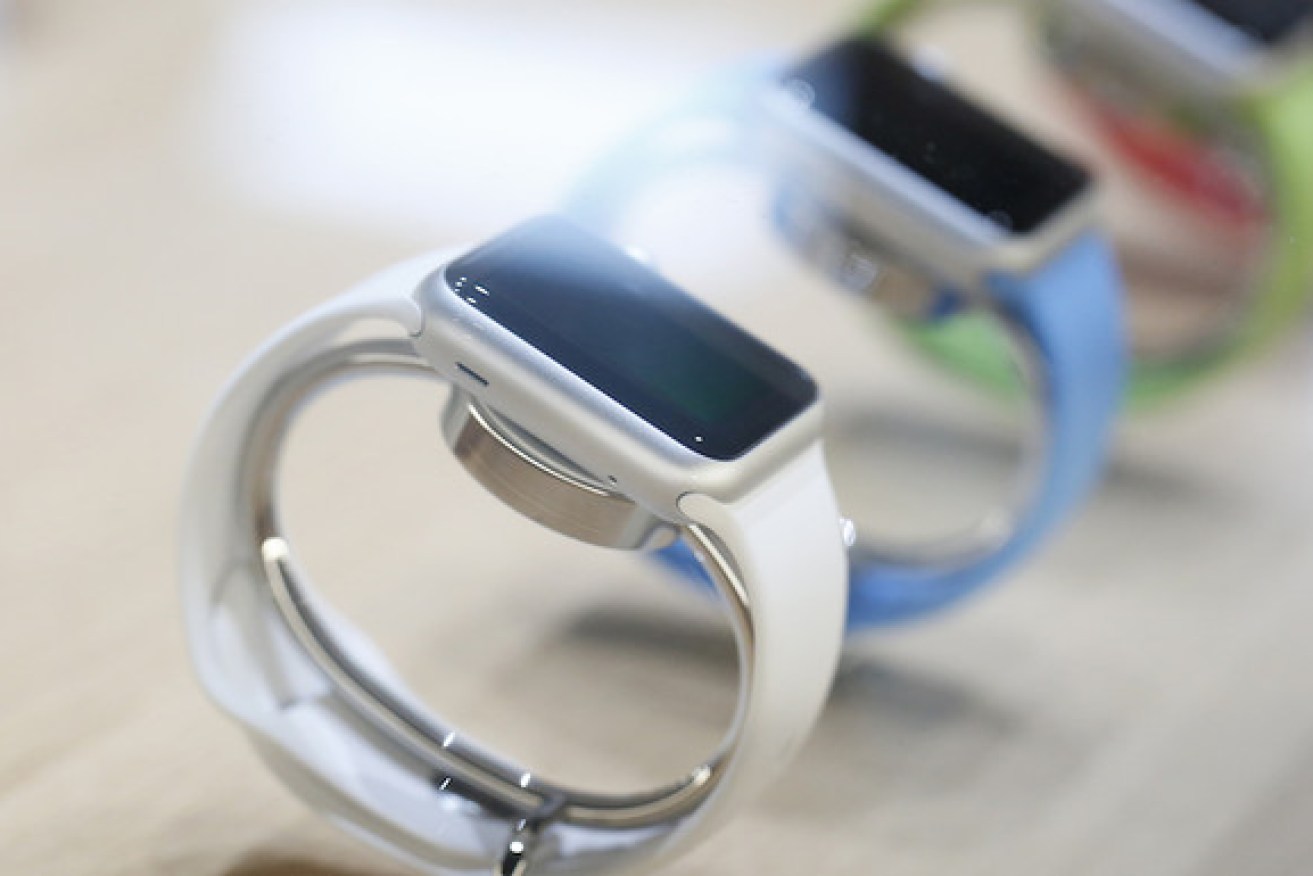Smart devices: The future of wearables


It hasn't been a great year for wearables, but the future is bright. Photo: Getty
If your New Year’s resolution involves improving your health, your productivity or both, chances are a smart wearable device will play a key role in helping you achieve your goals.
Be it a GPS watch, fitness tracker, smartwatch or smart glasses, we now have an almost equal measure of choice in smart wearable devices as we do our smartphones.
Indeed, many companies that once only dabbled in smartphone hardware have now ventured into the world of complementary wearables; each with various levels of success.
But for all the groundbreaking technology that each wearable device boasts, we’re yet to see that one killer breakthrough – the Tony Stark-level innovation that will turn your run-of-the-mill wearable into an indispensable personal digital device for every modern citizen.
That may be about to change.
The wearable roller coaster
It’s been an interesting year for wearable tech. Interesting mainly for the tech world, but less so for consumers.
As the world braced for the arrival of each new fitness tracker or smart device, the majority of gadgets released frequently offered only small hardware improvements and tweaks to the existing operating system or apps – basically, just enough to classify as an ‘update’ and justify a new name, even if that was only a ‘2’ on the end.
Despite the improvement of everyday life promised from these new devices, it appears that many hardware companies are really yet to nail the ideal wearable. Not surprisingly, consumers en masse have responded with a collective shrug of the shoulders.
A name synonymous with fitness tracking, Fitbit experienced a fall in sales that would normally see shareholders reaching for their pitchforks – a roughly 43 per cent drop in income from the same time last year – despite releasing two new products in 2016.

Fitbit’s stocks have plummeted despite its new upgrades. Photo: Getty
While the ease and simplicity of each Fitbit device cannot be denied – nor can the company’s edge on the social aspect of fitness training – the small changes that separate each device have not been enough to entice existing users, who appear to be holding on to their old Fitbit activity tracker instead of upgrading for a single additional feature.
Meanwhile, Apple took the opportunity to update its first smart wearable, Apple Watch, by adding GPS and water resistance – the Watch that would have had more impact on the world had it been the first model released.
When Apple released Apple Watch, in 2015, the company joined the ranks of other popular smartwatch manufacturers – Motorola, Sony and Samsung – that offered a device that merged fitness tracking capabilities with communication features and apps.
Samsung’s Gear smartwatch had been a favourite among Android users until then, as had indie darling, Pebble, with the Moto 360 bringing up the rear. What separated all these models? Essentially: aesthetics and battery life.

The Apple Watch is currently the most popular smartwatch. Photo: Apple
Then along came Apple Watch. Despite taking a generation to catch up to the hardware specifications of other manufacturers, as well as experiencing a dip in market share in the last 12 months (from 17.5 per cent to 4.9 per cent – source IDC), the device now holds the lead as the world’s top-selling smartwatch, followed closely by Samsung.
Meanwhile, Garmin and TomTom GPS watches remain firm favourites among many athletes, favoured for their superior location capabilities and workout tracking features.
For now, the smart wearables market appears to have settled, with fans finding a favoured device and sticking to it.
But dispel any thoughts you may have that the sun is setting on the world of smart wearables. The next evolution of devices is right around the corner, and promises to be the high-tech marvels we’ve been waiting for.
The year ahead

Tattoo smart trackers could be the next evolution. Photo: DuoSkin
Imagine this: your smart wearable will one day very soon play a greater role in daily life than you can ever imagine. In fact, the next 12 months will see some amazing developments in both connectivity and features, derailing any notion that the smartwatch and humble fitness tracker should be put to pasture.
The first concept to change is the idea that a wearable is strictly for your wrist. Tomorrow’s smart tracker will take the form of a necklace or ring, a tattoo, a shoe insole, a contact lens, or even a sub-dermal implant – all devices in development, and some even available, right now.
While you won’t be saying goodbye to your existing smartwatch or Fitbit any time soon, as these new devices become more widely available, their applications and features will likewise grow as we find new ways to improve everyday life beyond simple cardio fitness, productivity and communications.
Freedom through smart technology
Take, for example, a new smart Continuous Glucose Monitoring (CGM) system that provides regular glucose status updates for Apple Watch users.
The Dexcom G5 Mobile CGM system is worn under the skin; taking blood glucose measurements and transmitting data directly to the wearer’s smartphone, which can be shared with other ‘followers’, such as family members or their GP. All data can also be uploaded to a cloud service to build a comprehensive portrait of glucose activity, which, again, can be shared with, and monitored by, healthcare professionals.
This is a similar smart device to one Google announced was under development, in 2014: a smart contact lens that measures the wearer’s blood glucose level in their tears and provides an alert when levels get above or below a certain threshold.

England captain Alastair Cook wears a pair of Google Glass glasses during a nets session. Photo: Getty
Of course, this device is far removed from Google’s first attempt at augmented living, Google Glass, which became an unfortunate failure.
Worn like a pair of conventional glasses, Google Glass consisted of a small display placed before one eye and a forward facing camera. Users could receive data and information about the world around them – like navigation data or restaurant reviews – as well as communications.
Despite having numerous healthcare applications, communications features and overall lifestyle benefits, the Google Glass project was shuttered amid a hail of security, safety and privacy concerns. The company is now working on a follow-up device, called Google Glass Enterprise Edition, which improves and refines many features of the first generation wearable.
A vision of the future
Bionic contact lenses are also another area of growing development, with researchers designing corrective lenses with smart capabilities.
We may be 10 years away from the final product, but a team led by Dr Hongrui Jiang, of the University of Wisconsin, is currently developing a smart contact lens that can focus independently of the human eye, allowing certain vision impaired patients a new look at the world.
Samsung is taking this concept one step further, by developing a smart lens that can take photos and record video – all with the blink of an eye – and send content directly to your smartphone. The lens will even have a miniature display that projects images and video directly in front of the eye.
Tattoos: so hot right now
If decorating your skin is the ultimate jewellery, you’ll soon be able to swipe right on your forearm and look fabulous at the same time.
A collaboration between Microsoft and the Massachusetts Institute of Technology (MIT), DuoSkin is a wearable tattoo that can give users basic control of external devices or the ability to wirelessly communicate data, like boarding pass information or the entry code for a wireless home door lock.
Learn more about DuoSkin below:
Developed using gold leaf material and small integrated circuits, or chips, the DuoSkin project may never reach fruition in its current form, but researchers hope the concepts presented will lead others to develop similar wearables with a greater variety of applications.
One such device is electronic skin, or e-skin, that turns flesh into a rudimentary (for now) LED screen. Looking more like a clear film – like cling wrap – the flexible display is applied to any patch of skin and lasts up to several days.
Initially, researchers see this e-skin being used in hospitals, to display patient data, like heart rate and blood pressure. With further development we could soon see wearables like this used to communicate data from a smartphone or other nearby devices, like a silent doorbell for the hearing impaired.
More than a gemstone
While we wait for innovations like these to appear, you’ll be happy to know that other industrious souls have turned their talents to making the every day wearable a little easier on the eye.
If the thought of wearing a chunky smartwatch or activity trackers on your wrist turns you off, you’re in luck. Say hello to wearable jewellery.
Ringly is a smart ring that not only communicates incoming calls or messages with vibrations and discreet light, but also tracks steps and distance covered. It’s a smart, smart alternative when you want to dress up a little.
A look at when jewellery meets technology below:
https://www.youtube.com/watch?v=1ssG2xota8c
If you prefer your wearable on the ostentatious side, Misfit have partnered with Swarovski to create an ‘activity crystal’ – a single crystal designed by the company’s French design team, set in a stunning pendant that’s guaranteed to turn heads. Oh, it also features activity tracking and sleep monitoring.
Yes, you will likely still be wearing a fitness tracker or smartwatch five years from now, but with the advancements we’ll witness over that time, you’ll come to think of it more as a ‘one ring to rule them all’ wearable that connects all your other services and improves your daily life on a dramatic scale.








